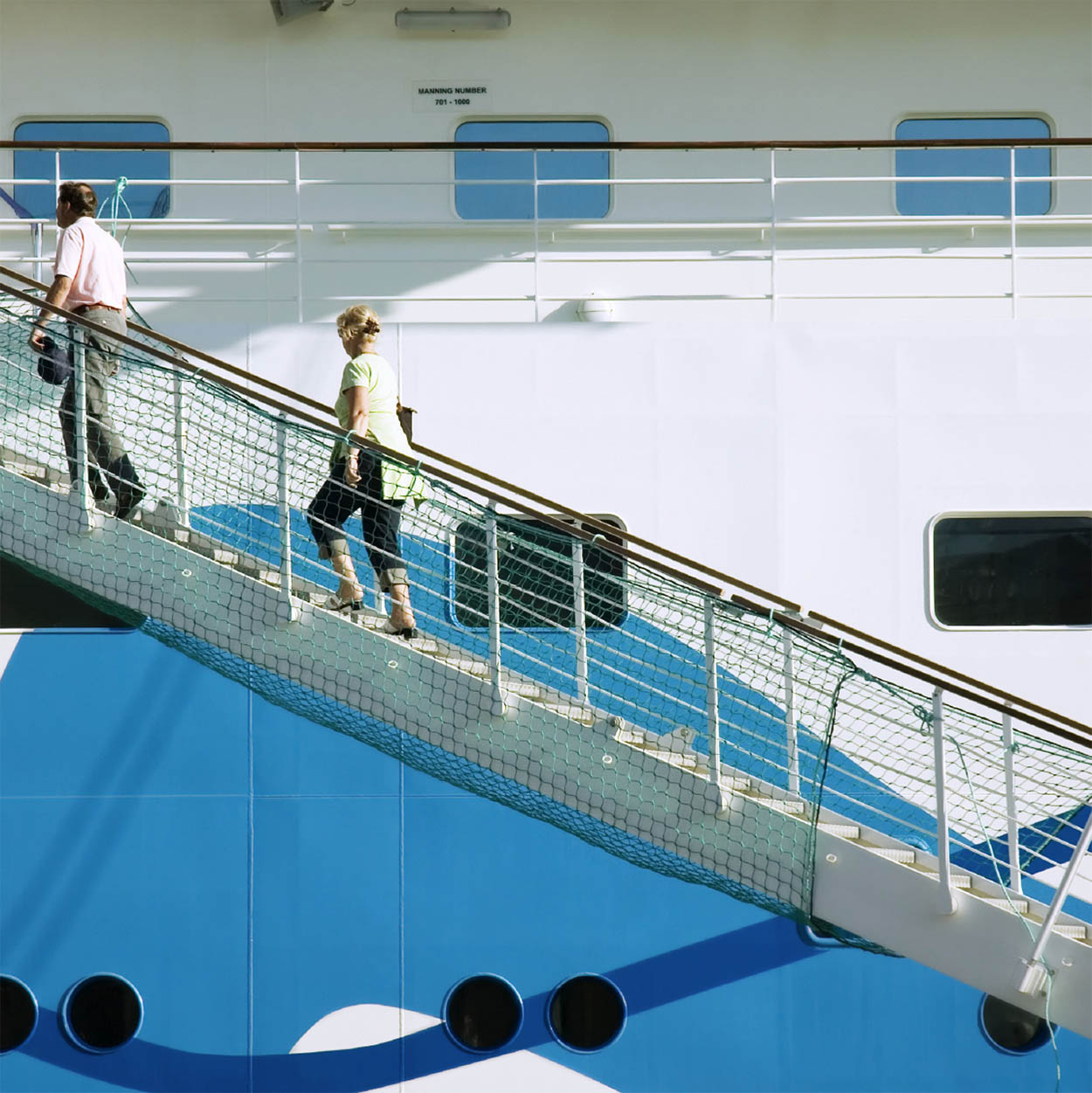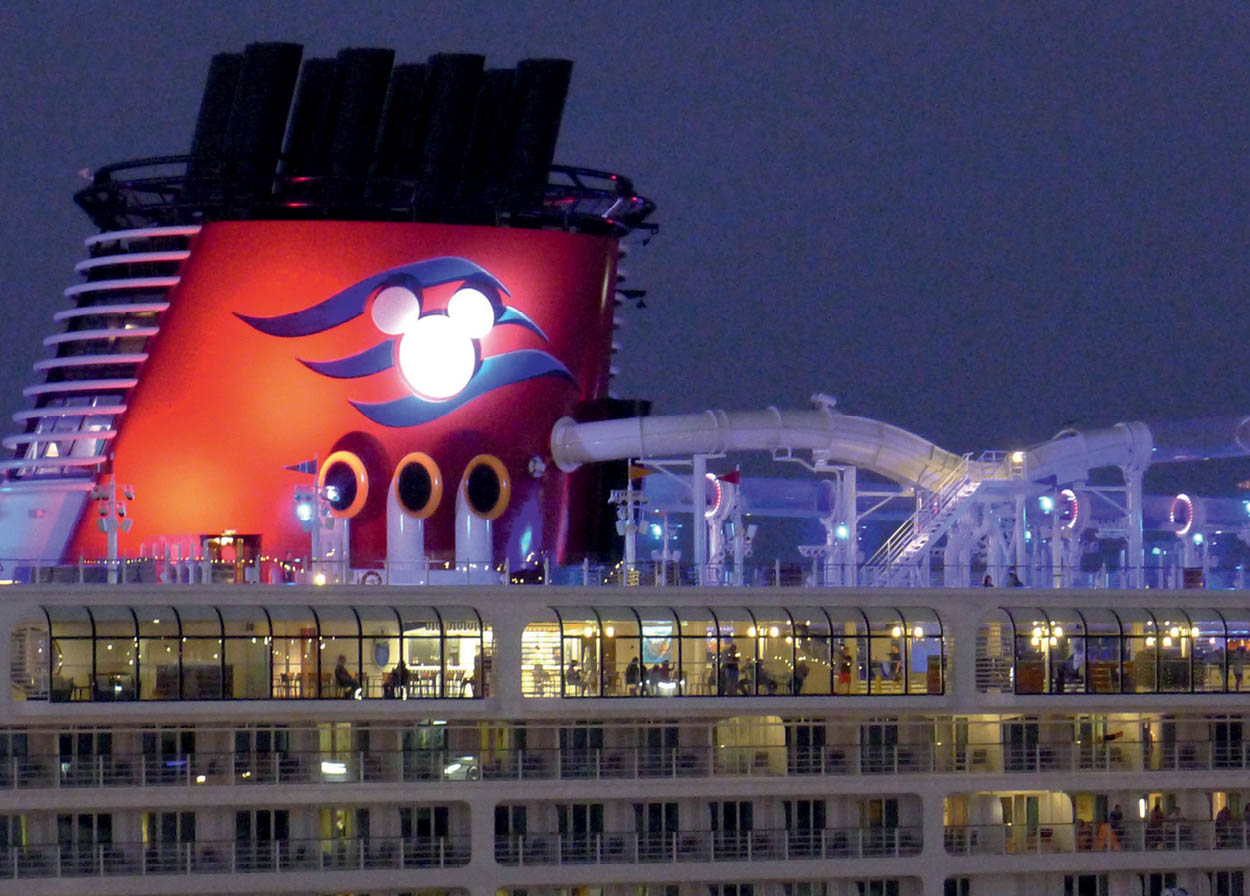Stepping aboard for the first time? Here is what you need to know about a typical embarkation.
Taking your first cruise? Make sure you have your passport and any visas required (in some countries – such as China or Russia – you might go ashore on organized excursions under a group visa. Pack any medication you may need (in original, labeled containers) in your carry-on hand luggage.
You already have been sent your cruise tickets, documents (including immigration form to be completed before you get to your ship), and luggage tags by the cruise line or your travel agent, or e-documents via the Internet.

Passengers embarking aboard Island Escape.
iStockphoto
Checking in online
Most cruise lines now expect you to check in online. This helps reduce staff numbers – usually locally sourced part-time retirees – at check-in desks in embarkation cruise terminals. This could be smooth if you are computer-literate or a frustrating nightmare if you are not.
The truth is that the paper cruise tickets and other documents formerly used by most major cruise lines have become collectors’ items, because paperless ticketing is now the norm (at least in their offices). You will need to print your boarding pass at your own cost. Expect more cruise lines to follow suit in an effort to cut costs. It typically takes about 10–15 minutes to complete the online check-in process, assuming that you have all your booking details at hand.
Pretty soon there’ll be self-serve cruising, where you wait your own tables, and…? Wait a moment, didn’t easyCruise try the no-frills style of cruising – and fail? Warning to cruise line accountants: you may soon not be needed.
Depending on the cruise line, there are usually four major steps to complete, each step requesting information, before you can actually reach the stage where you can print out your ‘boarding pass.’ Before you start the online check-in procedure, however, you’ll need to put in your name, reservation number, and any other pertinent personal information requested.
Step 1: Passenger information.
Step 2: Your onboard expense account information (pre-register your credit card).
Step 3: Cruise ticket contract (you’ll need to have 20/20 eyesight to read this, or take it to your local optician).
Step 4: Print your boarding pass and baggage tags.
Offer to do the online check-in for your whole family or group, and you could end up spending hours and hours at your computer. Note that if you don’t register a credit card for your children, you may not be able to print out their boarding passes.
You’ve arrived at the airport closest to your ship’s embarkation point, and retrieved your luggage. There will be a representative from the cruise line waiting, holding aloft the company’s name. You then place your luggage in a cluster together with those of other passengers. The next time you see your luggage should be in your cabin.
You’ll find check-in desks in the passenger terminal. If your accommodation is designated as a ‘suite,’ there should be a separate check-in facility.
Anyone cruising from a US port who is a non-US citizen or ‘resident alien’ will go to a separate desk to check in (Note: Do not buy duty-free liquor to take on board – it won’t be allowed by the cruise line and will be confiscated until the last day of the cruise). You will leave your passport with the check-in personnel. Ask for a receipt – it is a valuable document – and preferably have a photocopy of the main pages to keep with you. If you are cruising from any other port in the world that is not a US port, be aware that each country has its own check-in requirements.
Getting aboard
You then proceed through a security-screening device, for both your body and hand luggage, as at airports. Then it’s a few paces to get to the gangway. This may be a covered, airport-type gangway, or an open one (hopefully with a net underneath it in case you drop something over the side). The gangway could be level, or you may have to walk up (or down) an incline, depending on the location of the gangway, the tide, or other local conditions. As you approach the gangway you will probably be greeted by the ship’s photographers, a snap-happy team ready to take your photograph, bedraggled as you may appear after having traveled for hours. If you don’t want your photograph taken, say ‘no’ firmly.
At the ship end of the gangway, you will find the ship’s cruise staff will welcome you aboard, but may or may not guide you to your cabin.

The funnels on a Disney ship prominently display Mickey Mouse ears.
Douglas Ward
Things to check
The door to your cabin should be open. If it is locked, ask the steward to obtain the key to open the door. You will have received an electronically coded key card at check-in. Once inside the cabin, take a good look around. Is it clean? Is it tidy? Are the beds properly made? Make sure there is ice in the ice container. Check the bathroom, bathtub (if there is one), or shower. Make sure there are towels and soap.
If there are problems, tell your cabin steward immediately. Or call the reception desk, explain the problem, and establish how it will be resolved and by whom.
Memorize the telephone number for the ship’s hospital, doctor, or for medical emergencies, just so you know how to call for help should an emergency arise.
Your luggage probably will not have arrived yet – especially if it is a large resort ship carrying more than 1,750 passengers – but don’t sit in the cabin waiting for it. Put your hand luggage away somewhere, and, deck plan in hand, take a walk. If you’re hungry, you may want to head to the self-serve buffet – but, be warned that aboard the large resort ships, it’ll probably be a bit of a free-for-all.
Familiarize yourself with the layout of the ship. Learn which way is forward, which way is aft, and how to reach your cabin from the main stairways. This is also a good time to learn how to get from your cabin to the outside decks in an emergency – these are rare, but they do happen.
Control that thirst
You’re thirsty when you arrive in your cabin. You notice a bottle of water with a tab around its neck. Be sure to read the notice on the tab: ‘This bottle is provided for your convenience. If you open it, your account will be charged $4.50.’
On deck, you are greeted by a smiling waiter offering you a colorful, cool drink. But, put your fingers on the glass as he hands it to you and he’ll also ask for your cruise card. Bang, you’ve just paid $6.95 for a drink full of ice worth 5¢.
The cost of drinks soon adds up. Aboard ships operated by Europe-based companies, mixers such as tonic for gin are usually charged separately.
The safety drill
Make sure you attend, and pay attention – it could save your life. Regulations dictate that a Passenger Lifeboat Drill must take place within 24 hours after the ship sails from the embarkation port, but typically it takes place before the ship sails and this will probably become law following the Costa Concordia tragedy in January 2012. Directions to your assembly station will be posted on the back of the cabin door. After the drill, you can take off the lifejacket and relax. By now, your luggage probably will have arrived.